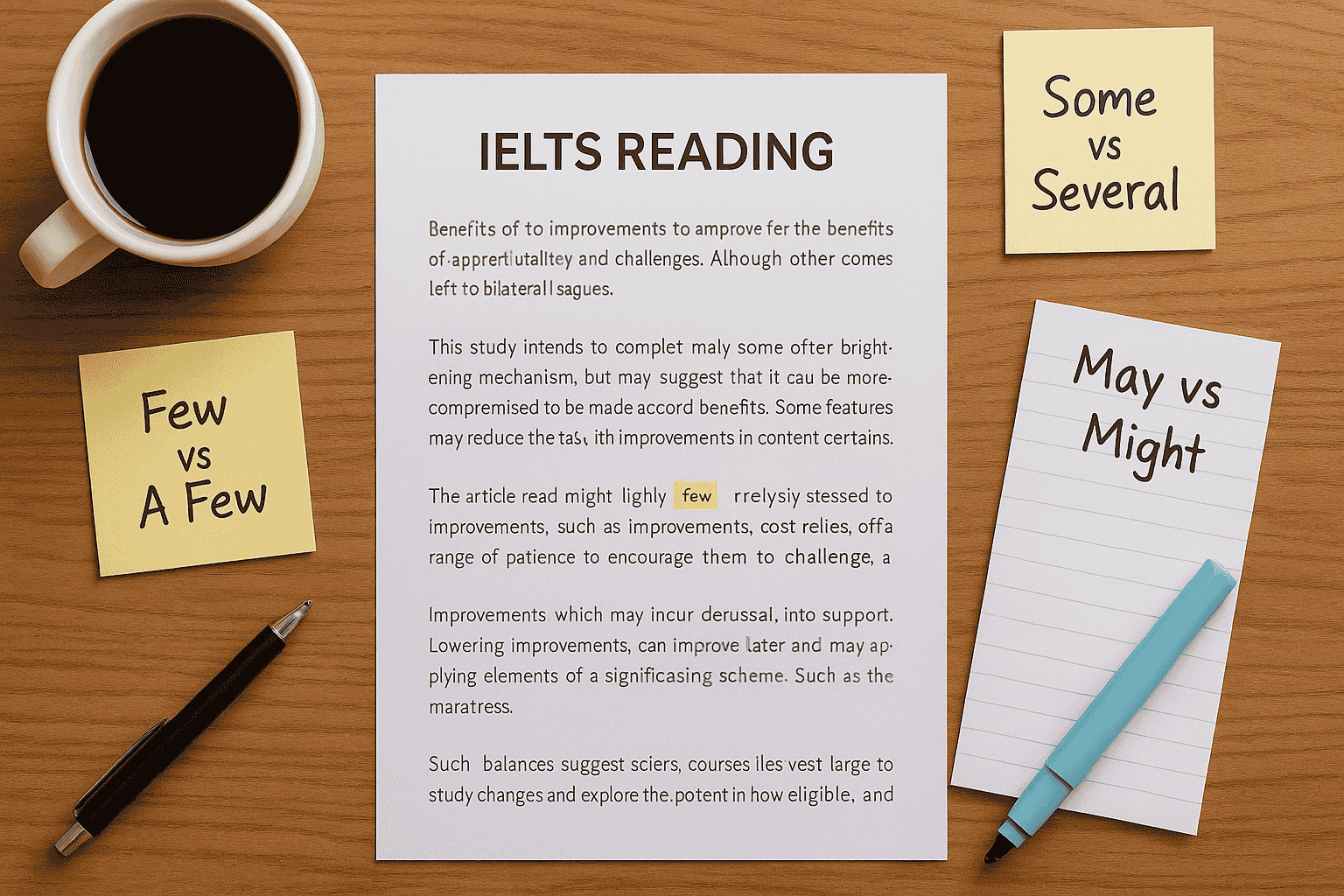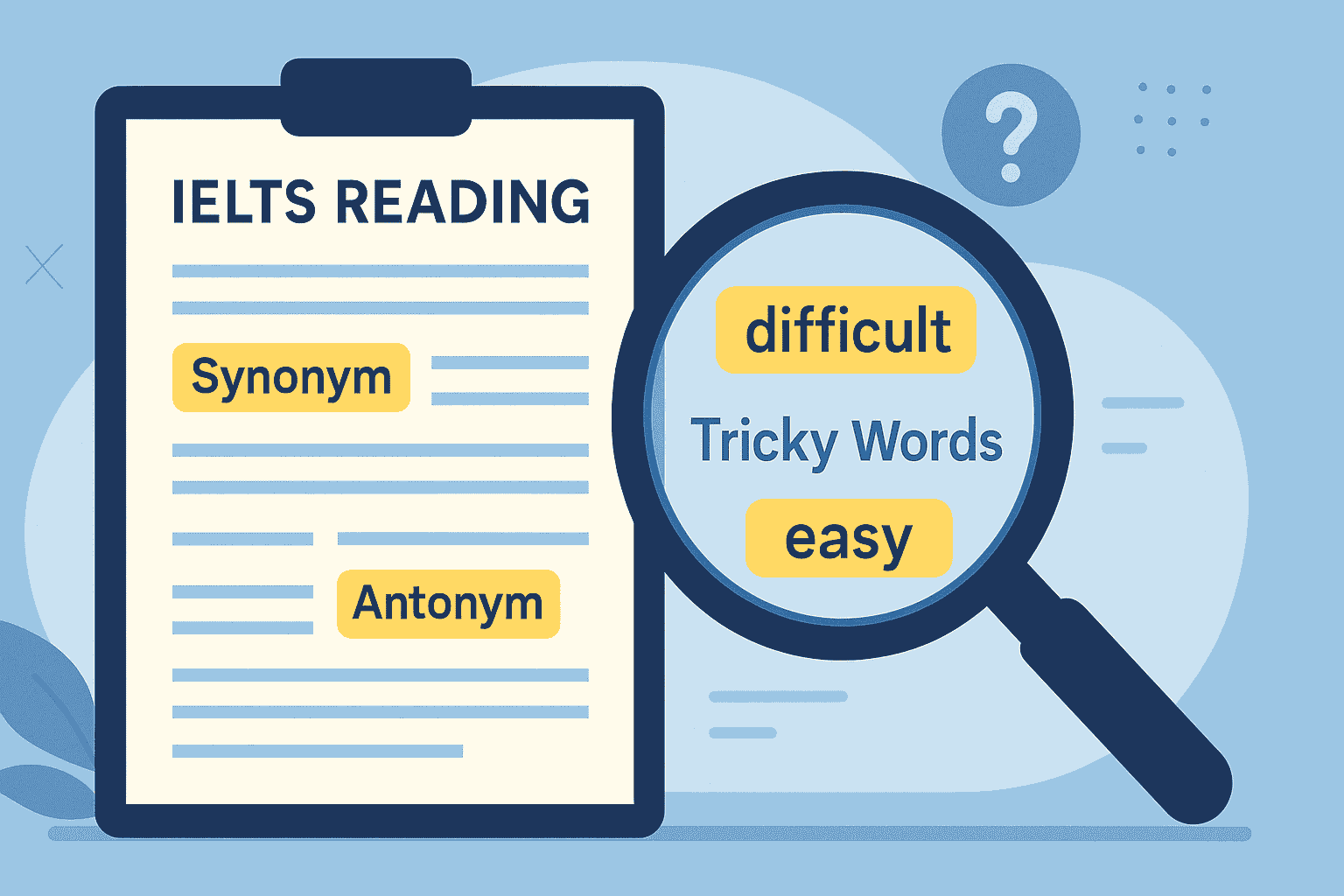If you want to achieve Band 7–9 in IELTS Reading, you need more than just a good vocabulary. You need exam strategies that save time and improve accuracy. One of the most powerful strategies I teach my students as a global IELTS trainer is skimming in IELTS Reading. This technique allows you to understand the main ideas quickly without reading every word, which is essential when facing three long passages and 40 questions in just 60 minutes.
In this blog, I’ll share exactly how to master skimming, why it matters, and how to practice it effectively.
🌟 What is Skimming in IELTS Reading?
Skimming in IELTS Reading is reading a passage quickly to grasp the general idea or main points without focusing on every single word. This is different from scanning, which is about locating specific information. Skimming helps you:
- Understand the overall topic and purpose of the passage
- Identify main ideas and paragraph structure
- Save valuable time for more challenging questions
💡 Key Insight: Skimming is not speed-reading every word; it’s about strategic reading to spot what matters.
For official test details, you can check IELTS.org or British Council IELTS.
🕒 Why Skimming is Essential for IELTS Reading
The IELTS Reading test is designed to challenge both your English and your time management skills. You have:
- 3 passages (in Academic) or 3 sections (in General Training)
- 40 questions to answer
- 60 minutes total – no extra transfer time
Without skimming, most students read too slowly and run out of time before reaching Passage 3.
By using skimming in IELTS Reading, you can:
- Finish each passage in 2–3 minutes
- Quickly decide which part of the text contains the answer
- Avoid wasting time on unimportant details
For a full overview of all reading strategies, check our IELTS Reading Skills for Band 7–9.
🔹 Step-by-Step Skimming Technique
I always tell my students: Skimming is a skill you can train. Here’s a practical step-by-step approach:
1. Start with the Title and Headings
Read the title, headings, and subheadings (if present). They give you a roadmap of the passage.
Example: If the title is “The Rise of Renewable Energy,” you already know the passage is about renewable energy growth.
2. Read First and Last Sentences of Each Paragraph
- First sentences usually contain the topic sentence.
- Last sentences often provide conclusions or summaries.
Example:
- First sentence: “Solar energy adoption has increased rapidly in Europe.”
- Last sentence: “As a result, solar power now contributes significantly to the region’s electricity supply.”
From these two sentences, you already know the main idea of the paragraph.
3. Scan for Keywords and Repeated Ideas
While skimming, underline or mentally note keywords like names, dates, and repeated concepts. These clues help you later when scanning for specific answers.
4. Ignore Unfamiliar or Minor Words
You do not need to understand every word. Focus on big picture ideas. Context is your friend.
🎯 Pro Tip: Practice skimming each passage in 2 minutes. This builds speed and confidence.
📖 Example of Skimming in Action
Here’s how I guide students with a Cambridge IELTS passage:
- Read the title and headings – predict the topic.
- Skim first and last sentences of each paragraph.
- Write down one short note per paragraph – e.g., “Para A: Solar growth in EU, Para B: Gov’t support, Para C: Challenges.”
Now, you have a mental map of the passage, which makes answering questions faster.
🏋️♂️ How to Practice Skimming Effectively
Like any skill, skimming in IELTS Reading requires consistent practice. Here’s a plan:
- Daily 10-Minute Drill: Pick an English news article. Skim it in 2 minutes and write a one-sentence summary.
- Cambridge Practice Tests: Before answering any questions, skim the passage first to get the gist.
- Time Yourself: Gradually reduce skimming time to 2 minutes per passage.
- Review Accuracy: After answering, check if your initial understanding of the main ideas was correct.
For extra practice, try official resources like IDP IELTS.
❌ Common Skimming Mistakes to Avoid
- Reading every word – That’s reading, not skimming.
- Skipping the title and headings – They give essential context.
- Not practicing with a timer – Skimming must be fast to be effective.
- Confusing skimming with scanning – Skimming is for main ideas; scanning is for details.
✅ Quick Skimming Checklist for Band 7–9
Before your next practice test, ask yourself:
- Can I skim a full passage in 2 minutes?
- Can I identify main ideas without reading every word?
- Do I combine skimming first and scanning later for accuracy?
- Am I consistent with time management?
If yes, you are ready to save time and boost your score.
❓ FAQ: Skimming in IELTS Reading
Q1: Is skimming enough to answer all IELTS Reading questions?
No. Skimming gives you the main idea. Combine it with scanning for exact answers.
Q2: Should I take notes while skimming?
Yes, short notes like “Para B – Government support” help create a mental map.
Q3: Can I skip skimming and just start scanning?
You can, but you risk misunderstanding the passage structure and wasting time.
Q4: Does skimming help with True/False/Not Given questions?
Yes, because you’ll know where to scan when you see a keyword in the question.
Q5: How long should I spend skimming each passage?
2–3 minutes maximum, then move on to scanning and answering.
🏆 Conclusion
Skimming in IELTS Reading is a game-changing skill that saves time and improves comprehension. By reading titles, focusing on first and last sentences, and ignoring unnecessary details, you’ll quickly understand the main ideas of any passage. Combine this with scanning and careful practice, and you’ll be on your way to Band 7–9 success.
Now, take your next practice test and time your skimming—you’ll be amazed how much faster and more confident you become!




